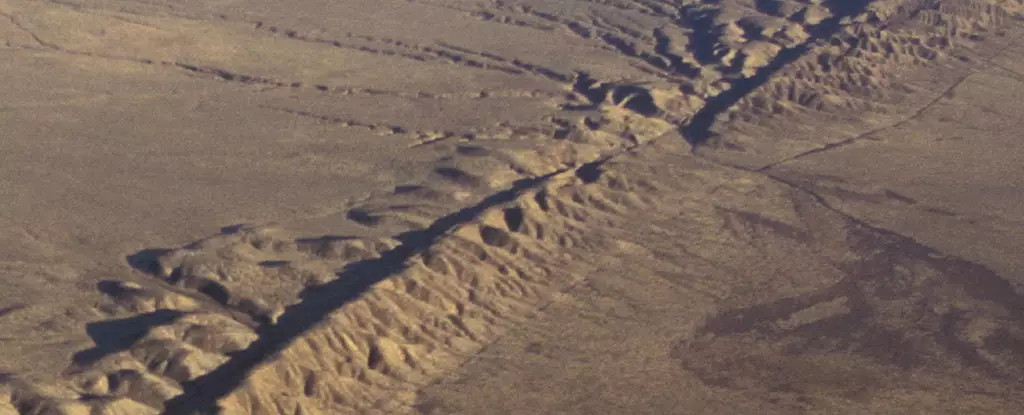In a world obsessed with rapid, catastrophic disasters, the slow-motion earthquakes—often dismissed as harmless whispers—hold profound implications for our survival. These gentle tectonic movements, unfolding over days or even weeks, challenge our traditional understanding of seismic activity. While they are not immediately destructive, their significance as potential harbingers of sudden, devastating quakes cannot be overstated. This nuanced phenomenon forces us to reconsider our approach to earthquake preparedness, shifting from reactive to proactive strategies rooted in cutting-edge science.
The advent of advanced sensor technology has transformed what we know about these “ripples” in the earth’s crust. Modern borehole sensors, capable of detecting ground shifts as minute as a few millimeters, have unveiled an intricate dance of stress release and buildup along fault lines. The real-time observation of SSEs near Japan’s Nankai Trough exemplifies how technology now allows us to peer into the Earth’s hidden processes with unprecedented clarity. Such insights reveal that these slow-slip events are not mere anomalies but integral parts of the tectonic cycle—acting as both shock absorbers and stress accumulators. They may subtly weaken fault lines or, conversely, set the stage for even larger, more destructive quakes.
This interpretive leap elevates slow earthquakes from scientific curiosities to critical data points in seismic risk assessment. It underscores the urgent need for comprehensive monitoring—not just in earthquake-prone zones like Japan but also in vulnerable regions such as Cascadia. The Pacific Northwest, with its history of megaquakes like the 1700 Cascadia event, remains perilously silent in the face of potential warning signs. If we ignore these subtle signals, we risk being caught unprepared when the “big one” finally strikes, devastating communities and economies.
Reframing Our Tectonic Awareness: From Risk to Responsibility
Understanding that slow earthquakes can influence stress accumulation alters the narrative of seismic danger. Traditional models often viewed earthquakes as sudden, uncontrollable forces—an unpredictable wrath of nature. Now, however, the recognition that the earth’s crust operates like a complex, adaptive system offers a more nuanced, arguably empowering perspective. It suggests that with enough data, we might someday forecast the timing and scale of seismic events with greater precision.
But herein lies a sobering reality: despite technological progress, predicting earthquakes remains as much an art as it is a science. The variables are manifold—fluid pressures, fault geometry, historic activity, even human activity—for which perfect foresight remains elusive. Still, incorporating slow slip activity into models dramatically enhances our understanding and could serve as a crucial piece of the puzzle. In regions like Cascadia, proactive monitoring informed by SSE patterns could provide vital lead time, potentially saving thousands of lives and enabling better preparedness measures.
Yet, this optimistic view is tempered by the acknowledgment of societal disparities and political will. Funding seismic monitoring infrastructure and ensuring global collaboration are significant hurdles. As climate change and population growth intensify risk factors, ignoring the insights from these slow earthquakes would be a critical mistake—one rooted in complacency and underestimation.
The Politics of Precaution: A Call to Action
If there’s one thing to criticize, it’s that we continue to undervalue the importance of preventative measures informed by scientific advancements. Governments and communities tend to react once devastation is at their doorstep, rather than investing in anticipatory strategies that leverage our growing understanding of seismic behavior. The recent discoveries about SSEs provide compelling evidence that we possess the tools to make smarter, more informed decisions.
Center-wing liberalism holds a moral responsibility to advocate for equitable access to advanced seismic monitoring technologies. Such initiatives are not just scientific pursuits; they are moral imperatives to protect vulnerable populations who often bear the brunt of natural disasters. Funding disaster preparedness and promoting public education about slow earthquakes could transform them from obscure scientific phenomena into vital components of national safety strategies.
Ultimately, acknowledging the significance of slow slip earthquakes challenges the complacency ingrained in current disaster management paradigms. It pushes us toward a future where our response to natural hazards is more informed, more responsible, and more humane. Ignoring these signals out of convenience or skepticism will only deepen the divide between those who are protected and those left exposed to the chaos of unchecked geological forces. We have the knowledge, the technology, and the moral duty to act—not just react—when the earth sounds its subtle warning whispers.

Leave a Reply